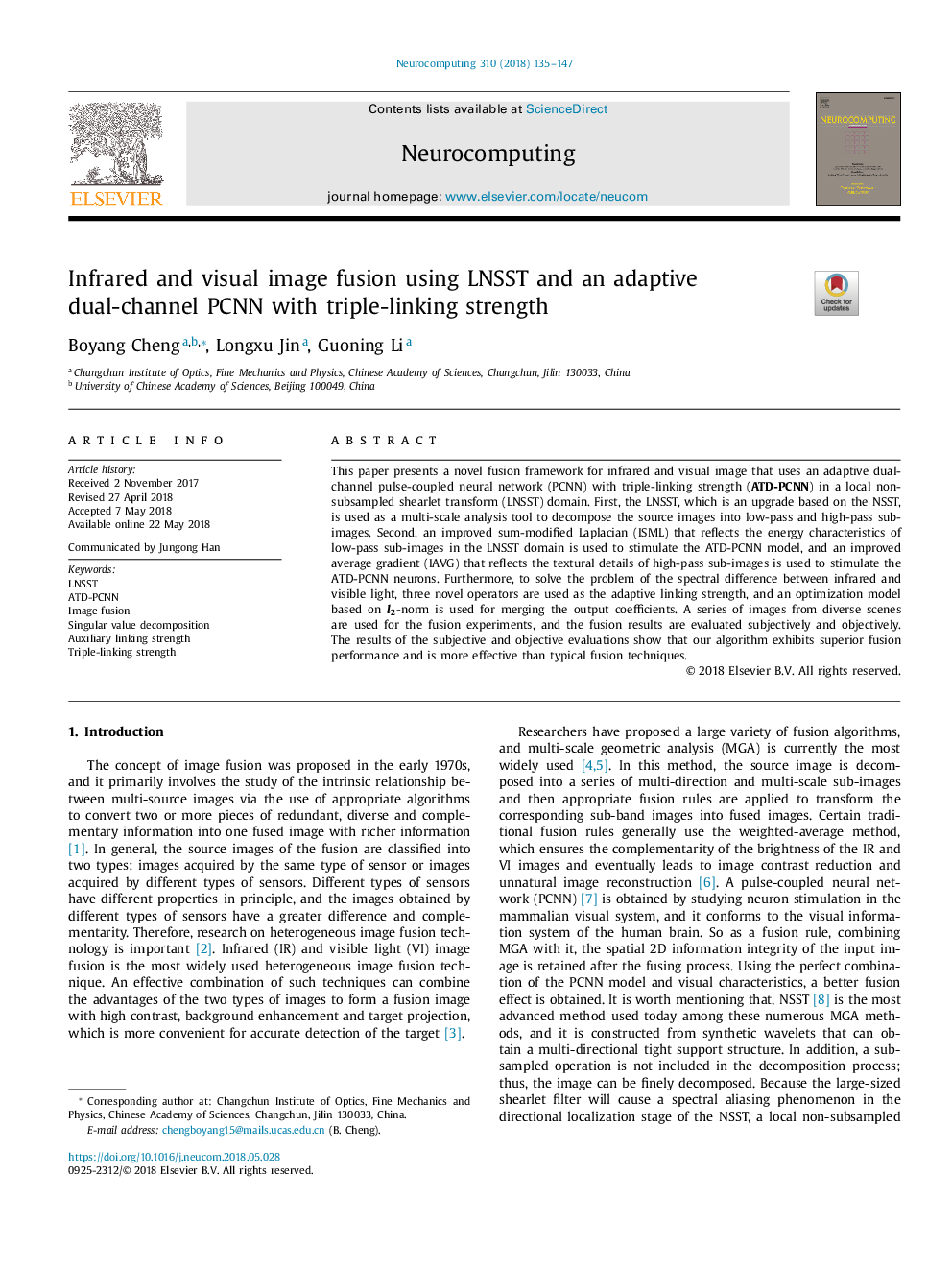| Article ID | Journal | Published Year | Pages | File Type |
|---|---|---|---|---|
| 6863636 | Neurocomputing | 2018 | 13 Pages |
Abstract
This paper presents a novel fusion framework for infrared and visual image that uses an adaptive dual-channel pulse-coupled neural network (PCNN) with triple-linking strength (ATD-PCNN) in a local non-subsampled shearlet transform (LNSST) domain. First, the LNSST, which is an upgrade based on the NSST, is used as a multi-scale analysis tool to decompose the source images into low-pass and high-pass sub-images. Second, an improved sum-modified Laplacian (ISML) that reflects the energy characteristics of low-pass sub-images in the LNSST domain is used to stimulate the ATD-PCNN model, and an improved average gradient (IAVG) that reflects the textural details of high-pass sub-images is used to stimulate the ATD-PCNN neurons. Furthermore, to solve the problem of the spectral difference between infrared and visible light, three novel operators are used as the adaptive linking strength, and an optimization model based on l2-norm is used for merging the output coefficients. A series of images from diverse scenes are used for the fusion experiments, and the fusion results are evaluated subjectively and objectively. The results of the subjective and objective evaluations show that our algorithm exhibits superior fusion performance and is more effective than typical fusion techniques.
Related Topics
Physical Sciences and Engineering
Computer Science
Artificial Intelligence
Authors
Boyang Cheng, Longxu Jin, Guoning Li,
